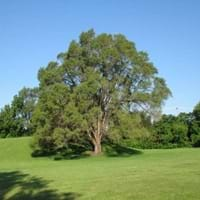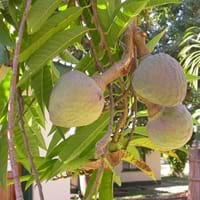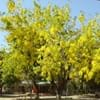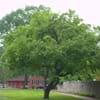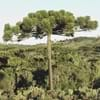Life Span
Perennial
Perennial
Origin
Asia
Asia, Caribbean, Central America
Types
Not Available
Not Available
Number of Varieties
Not Available
Habitat
Woodland Garden Canopy
secondary forest, Tropical Forests
USDA Hardiness Zone
2-9
3-8
Sunset Zone
A1, A2, A3, 1a, 1b, 2a, 2b, 3a, 3b, 4, 5, 6, 7, 8, 9, 10, 11, 14, 15, 16, 17, 18, 19, 20, 21
1a, 1b, 2a, 2b, 3a, 3b, 4, 5, 6, 7, 8, 9, 10, 11, 12, 13, 14, 15, 16, 17
Habit
Upright/Erect
Pyramidal
Minimum Height
Not Available
Minimum Width
Not Available
Flower Color
Not Available
Light Yellow
Flower Color Modifier
Bicolor
Bicolor
Fruit Color
Green, Tan
Gray Green, Sandy Brown
Leaf Color in Spring
Dark Green
Green
Leaf Color in Summer
Dark Green
Dark Green
Leaf Color in Fall
Dark Green
Yellow, Light Yellow, Yellow green, Sandy Brown, Ivory
Leaf Color in Winter
Not Available
Not Available
Leaf Shape
Elliptic
Lanceolate
Plant Season
Summer
Spring, Summer, Fall
Sunlight
Full Sun
Full Sun, Partial Sun
Growth Rate
Very Fast
Medium
Type of Soil
Clay, Loam, Sand
Clay, Loam
The pH of Soil
Acidic, Neutral, Alkaline
Acidic, Neutral, Alkaline
Soil Drainage
Average
Well drained
Bloom Time
Spring
Early Summer
Tolerances
Pollution, Drought
Pollution, Drought
Where to Plant?
Ground
Ground
How to Plant?
Seedlings
Grafting, Seedlings
Plant Maintenance
Medium
Medium
Watering Requirements
Do Not over Water, Needs watering once a week
Average Water Needs
In Summer
Lots of watering
Lots of watering
In Spring
Moderate
Moderate
In Winter
Average Water
Average Water
Soil pH
Acidic, Neutral, Alkaline
Acidic, Neutral, Alkaline
Soil Type
Clay, Loam, Sand
Clay, Loam
Soil Drainage Capacity
Average
Well drained
Sun Exposure
Full Sun
Full Sun, Partial Sun
Pruning
Remove diseased branches by the tool's blades dipped into the alcohol solution
Prune in the growing season, pruning needed for strong structure, Remove dead branches
Fertilizers
20-5-10 fertilizer
All-Purpose Liquid Fertilizer, Compost, High phosphorus
Pests and Diseases
Aphids, Leaf spot, Powdery mildew
Aphids, Downy mildew, Leaf rust, Mites, Squirrels
Plant Tolerance
Drought
Salt and Soil Compaction, Sun
Flowers
Insignificant
Insignificant
Flower Petal Number
Not Available
Single
Foliage Texture
Medium
Coarse
Foliage Sheen
Matte
Glossy
Attracts
Insects, Not Available
Butterflies, Hummingbirds, Not Available, Squirrels
Allergy
Mild Allergen
Nausea, Vomiting
Aesthetic Uses
Bonsai
Not Available
Beauty Benefits
Not Available
Anti-ageing, Maintains teeth healthy, Remove blemishes
Environmental Uses
Air purification
Air purification, Food for animals, Food for birds, Shelter for wildlife
Medicinal Uses
Antibilious, Antidote, Demulcent, Diuretic, Febrifuge, Poultice
Antibiotic, anti-cancer, Anti-oxidant, Cardiovascular problems, Diarrhea, Fever, Improve heart health
Part of Plant Used
Fruits, Inner Bark, Leaves
Fruits
Other Uses
Inner bark can be dried and made into noodles, Sauces, Sometimes used for making wine, Used as a potherb, Wood used for boat making
Culinary use, Grown for shade, Oil is used in perfume, soaps, creams, etc., Used for its medicinal properties
Used As Indoor Plant
No
No
Used As Outdoor Plant
Yes
Yes
Garden Design
Shade Trees
Feature Plant, Fruit / Fruit Tree, Shade Trees
Botanical Name
ULMUS pumila
Annona reticulate
Common Name
Siberian Elm
wild-sweetsop, bullock's-heart, ox-heart
In Hindi
Siberian Elm
ramphal
In German
Siberian Elm
Netzannone
In French
Siberian Elm
cachiman, cœur de bœuf
In Spanish
Siberiano Elm
Annona reticulata
In Greek
Σιβηρίας Elm
Ramphal
In Portuguese
Siberian Elm
coração-de-boi
In Polish
Siberian Elm
Flaszowiec siatkowaty
In Latin
Siberian Elm
Ramphal
Phylum
Magnoliophyta
Magnoliophyta
Class
Magnoliopsida
Magnoliopsida
Order
Urticales
Magnoliales
Family
Ulmaceae
Tiliaceae
Clade
Angiosperms, Eudicots, Rosids
Angiosperms, Magnoliids
Tribe
Not Available
Annoneae
Subfamily
Not Available
Annonoideae
Number of Species
Not Available
Season and Care of Siberian Elm and Ramphal
Season and care of Siberian Elm and Ramphal is important to know. While considering everything about Siberian Elm and Ramphal Care, growing season is an essential factor. Siberian Elm season is Summer and Ramphal season is Summer. The type of soil for Siberian Elm is Clay, Loam, Sand and for Ramphal is Clay, Loam while the PH of soil for Siberian Elm is Acidic, Neutral, Alkaline and for Ramphal is Acidic, Neutral, Alkaline.
Siberian Elm and Ramphal Physical Information
Siberian Elm and Ramphal physical information is very important for comparison. Siberian Elm height is Not Available and width Not Available whereas Ramphal height is 1,220.00 cm and width 760.00 cm. The color specification of Siberian Elm and Ramphal are as follows:
Siberian Elm flower color: Not Available
Siberian Elm leaf color: Dark Green
Ramphal flower color: Light Yellow
- Ramphal leaf color: Green
Care of Siberian Elm and Ramphal
Care of Siberian Elm and Ramphal include pruning, fertilizers, watering etc. Siberian Elm pruning is done Remove diseased branches by the tool's blades dipped into the alcohol solution and Ramphal pruning is done Prune in the growing season, pruning needed for strong structure and Remove dead branches. In summer Siberian Elm needs Lots of watering and in winter, it needs Average Water. Whereas, in summer Ramphal needs Lots of watering and in winter, it needs Average Water.
